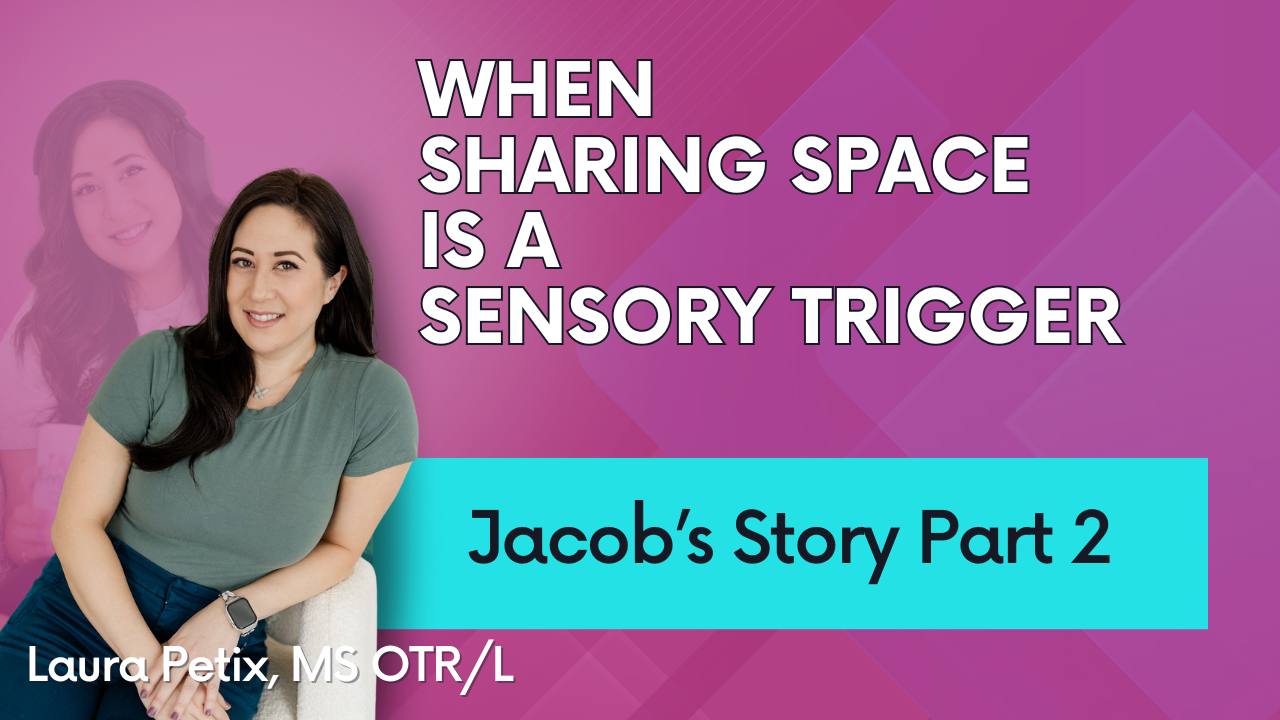It's not a complaint, it's a clue.

Remember last week when we learned that Theo was able to apologize to his teacher after eloping and then ask for a hug as a co-regulation strategy? Today I want to share something he said that led his mom and I to a huge revelation.
If you’re reading this out of order, catch up on parts 1, 2 and 3 (and double check you’re subscribing and receiving all my emails to your inbox so you never miss a case study sequence again!)
Theo's interoception revelation
When in the middle of a dysregulated moment (like when he’d be stimming and pounding his chest), Theo said to his mom,
“My body feels hot.”
When she shared this with me she asked if this was a good thing, and I said "This is FANTASTIC!"
Theo wasn't just complaining that he was overheading; Theo was recognizing his interoception cues relating to dysregulation, which is HUGE.
This clues us into what he’s experiencing when he’s pounding on his chest. As someone who is a full supporter and advocate of stimming in general, I also recognize that some stims are unsafe, so it can be important to uncover the why behind some of the stims. If we find that the stimming is a way to self soothe during a time of stress or dysregulation, we want to take a close look at the environment and the task to see if there’s any way we can modify or adapt it to decrease the need for those stims.
PS- want to learn more about stimming directly from autistic adults? Check out this article
When the sympathetic nervous system is activated, you see an increase in heart rate, breath rate, and even body temperature- so Theo was likely recognizing his nervous system’s innate survival response. If your child verbalizes any kinds of experience relating to these sensations, that is a great sign and a big help for you in terms of figuring out how to support them.
Counteracting the sympathetic nervous system
When your child can start to recognize the objective sensations they experience in their body that accompany those big emotional feelings like frustration or worry or sadness… it’s giving you the exact answer to help them regulate.
Overheating? Find a way to cool down.
Chest pounding? Slow down the heart rate by slowing the body and breath.
Hyperventilating? Slow, elongated exhales will do the trick.
Need an easy way to remember the difference between both systems?
🧠Think: Sympaethic = S for stress (which is when heart rate is up, breath rate is fast/shallow, and body temp is up)
🧠Then, think: ParaSympathetic =PS for Pause the Stress
Counteracting the sympathetic nervous system with these parasympathetic activation strategies is like a direct system override and will help you de-escalate a meltdown much quicker than saying “calm down”.
Parasympathetic activation strategies
With this knowledge, Theo’s mom and I talked about ways to help him cool his body down, like:
-
Holding ice cubes in his hands
-
Misting his face with cold water
-
Using a portable fan
Pssst... I have prevented and de-escalated many of my own impending panic attacks by taking a portable fan with me wherever I go. I too get hot flashes and surges of high body temperature when I feel anxious or stressed. Having this on the go with me has been such a game-changing sensory tool.
What can we learn from Theo's story?
Theo's story reminds us that every behavior is communicating the state of the nervous system. His elopment at recess, chest-pounding stims and emotional dysregulation during class were all related to his nervous system perceiving a threat from the environment. When his mom and I dug deeper and got curious about the environment and listened to what Theo was telling us with his behavior (and his words!) we were able to come up with a plan that supports his nervous system.
Next week, I’ll introduce you to my friend Chelsea, an initially socially anxious, emotionally and sensory sensitive 7 year old who was struggling with morning routine, getting dressed and staying in control of her body when she felt anxious or frustrated.
Continue learning from me:






Responses